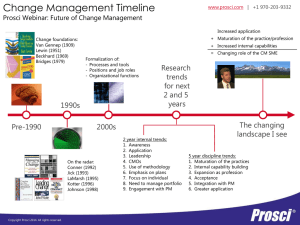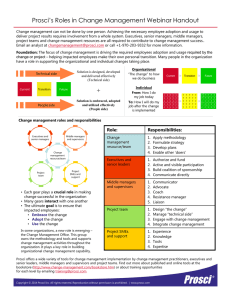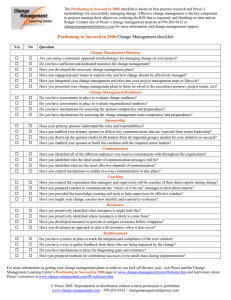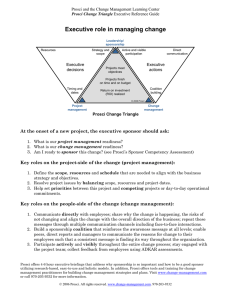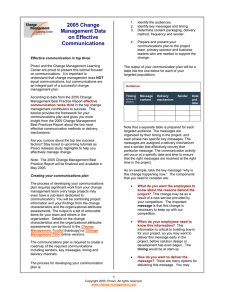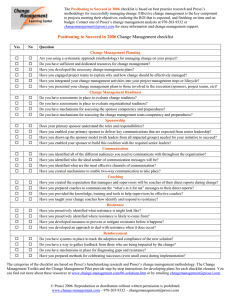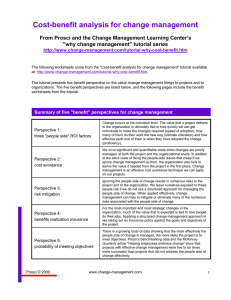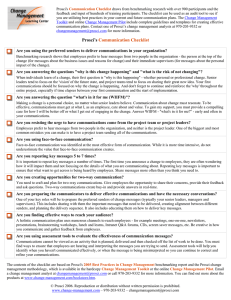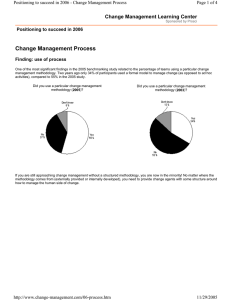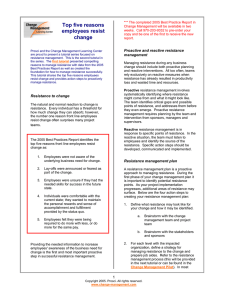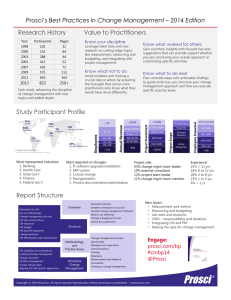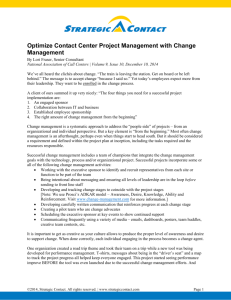This handout is a resource based on a tutorial by... It provides responses to some of the
advertisement
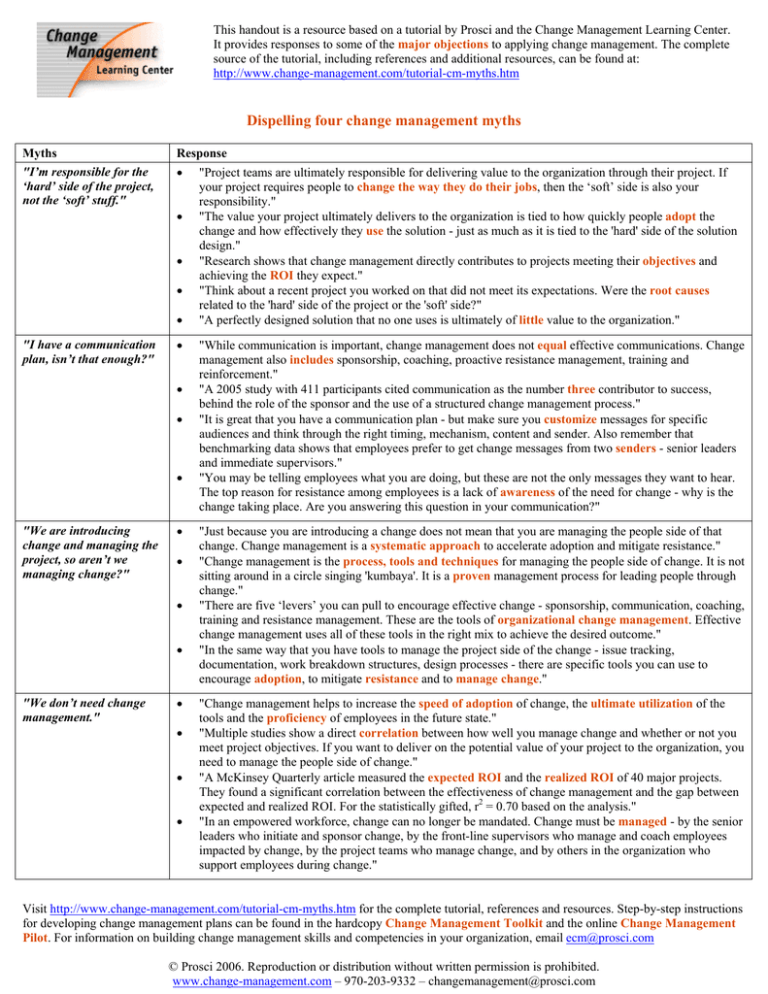
This handout is a resource based on a tutorial by Prosci and the Change Management Learning Center. It provides responses to some of the major objections to applying change management. The complete source of the tutorial, including references and additional resources, can be found at: http://www.change-management.com/tutorial-cm-myths.htm Dispelling four change management myths Myths "I’m responsible for the ‘hard’ side of the project, not the ‘soft’ stuff." Response • • • • • "I have a communication plan, isn’t that enough?" • • • • "We are introducing change and managing the project, so aren’t we managing change?" • • • • "We don’t need change management." • • • • "Project teams are ultimately responsible for delivering value to the organization through their project. If your project requires people to change the way they do their jobs, then the ‘soft’ side is also your responsibility." "The value your project ultimately delivers to the organization is tied to how quickly people adopt the change and how effectively they use the solution - just as much as it is tied to the 'hard' side of the solution design." "Research shows that change management directly contributes to projects meeting their objectives and achieving the ROI they expect." "Think about a recent project you worked on that did not meet its expectations. Were the root causes related to the 'hard' side of the project or the 'soft' side?" "A perfectly designed solution that no one uses is ultimately of little value to the organization." "While communication is important, change management does not equal effective communications. Change management also includes sponsorship, coaching, proactive resistance management, training and reinforcement." "A 2005 study with 411 participants cited communication as the number three contributor to success, behind the role of the sponsor and the use of a structured change management process." "It is great that you have a communication plan - but make sure you customize messages for specific audiences and think through the right timing, mechanism, content and sender. Also remember that benchmarking data shows that employees prefer to get change messages from two senders - senior leaders and immediate supervisors." "You may be telling employees what you are doing, but these are not the only messages they want to hear. The top reason for resistance among employees is a lack of awareness of the need for change - why is the change taking place. Are you answering this question in your communication?" "Just because you are introducing a change does not mean that you are managing the people side of that change. Change management is a systematic approach to accelerate adoption and mitigate resistance." "Change management is the process, tools and techniques for managing the people side of change. It is not sitting around in a circle singing 'kumbaya'. It is a proven management process for leading people through change." "There are five ‘levers’ you can pull to encourage effective change - sponsorship, communication, coaching, training and resistance management. These are the tools of organizational change management. Effective change management uses all of these tools in the right mix to achieve the desired outcome." "In the same way that you have tools to manage the project side of the change - issue tracking, documentation, work breakdown structures, design processes - there are specific tools you can use to encourage adoption, to mitigate resistance and to manage change." "Change management helps to increase the speed of adoption of change, the ultimate utilization of the tools and the proficiency of employees in the future state." "Multiple studies show a direct correlation between how well you manage change and whether or not you meet project objectives. If you want to deliver on the potential value of your project to the organization, you need to manage the people side of change." "A McKinsey Quarterly article measured the expected ROI and the realized ROI of 40 major projects. They found a significant correlation between the effectiveness of change management and the gap between expected and realized ROI. For the statistically gifted, r2 = 0.70 based on the analysis." "In an empowered workforce, change can no longer be mandated. Change must be managed - by the senior leaders who initiate and sponsor change, by the front-line supervisors who manage and coach employees impacted by change, by the project teams who manage change, and by others in the organization who support employees during change." Visit http://www.change-management.com/tutorial-cm-myths.htm for the complete tutorial, references and resources. Step-by-step instructions for developing change management plans can be found in the hardcopy Change Management Toolkit and the online Change Management Pilot. For information on building change management skills and competencies in your organization, email ecm@prosci.com © Prosci 2006. Reproduction or distribution without written permission is prohibited. www.change-management.com – 970-203-9332 – changemanagement@prosci.com
